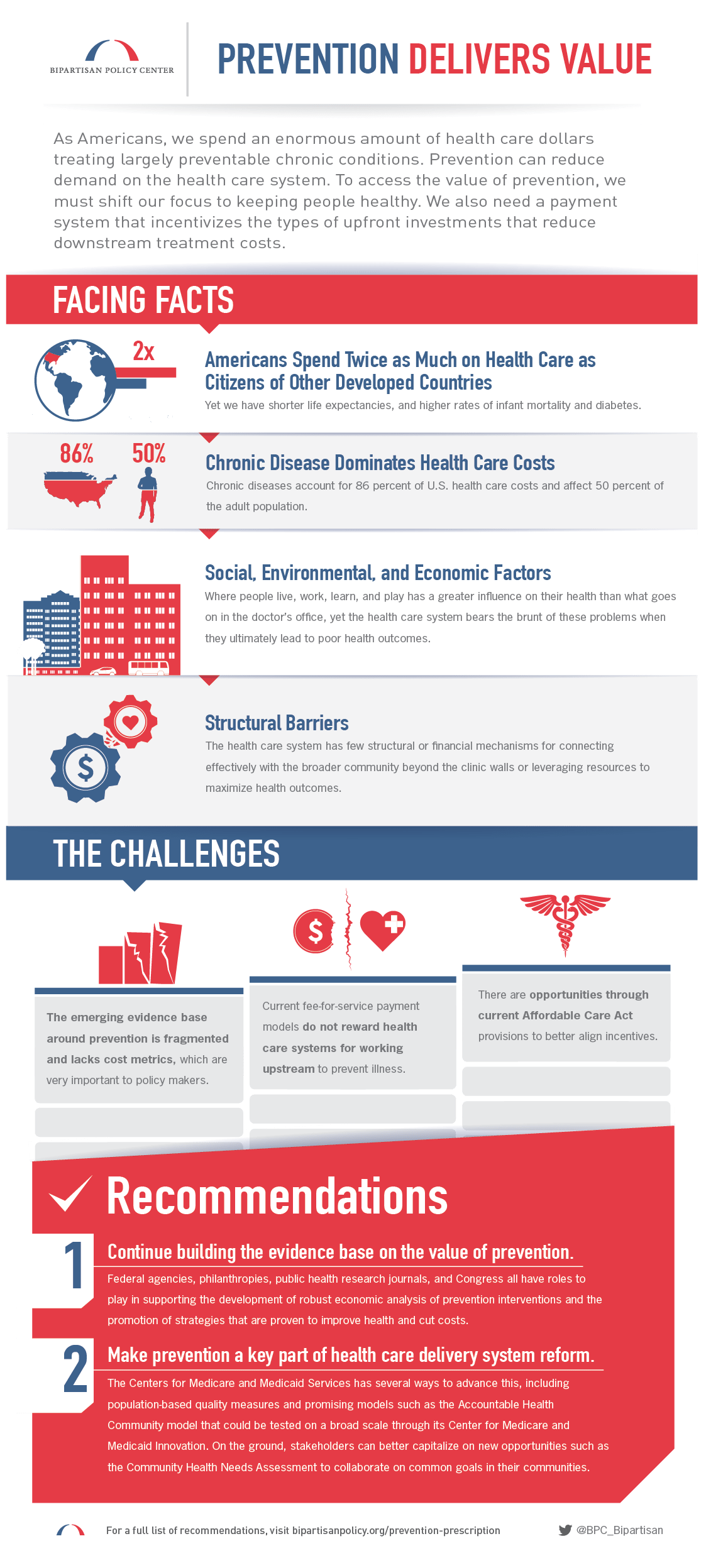The Value of Prevention
Despite the fact that Americans spend twice as much on health care as citizens of other developed countries, we are less healthy by multiple key indicators, including, for example, life expectancy, infant mortality, and prevalence of diabetes. These shortcomings have led to a broad consensus that fundamental change is needed in the U.S. health care system. The influential Institute for Healthcare Improvement has articulated the “triple aim” of a broader reform agenda for U.S. health care as “simultaneously improving the health of the population, enhancing the experience and outcomes of the patient, and reducing per capita cost of care for the benefit of communities.”
Given that preventable chronic diseases now account for 86 percent of U.S. health care costs and affect 50 percent of the U.S. population, effective prevention strategies that focus on known and modifiable risk factors for these diseases are increasingly viewed as critical to advancing the twin goals of improving health and reducing health care costs. This shift reflects a growing recognition that social, environmental, and economic factors are powerful determinants of health and that where people live, work, learn, and play has a greater influence on their health than what goes on in the doctor’s office.
Share
Read Next
Support Research Like This
With your support, BPC can continue to fund important research like this by combining the best ideas from both parties to promote health, security, and opportunity for all Americans.
Give NowRelated Articles
Join Our Mailing List
BPC drives principled and politically viable policy solutions through the power of rigorous analysis, painstaking negotiation, and aggressive advocacy.
